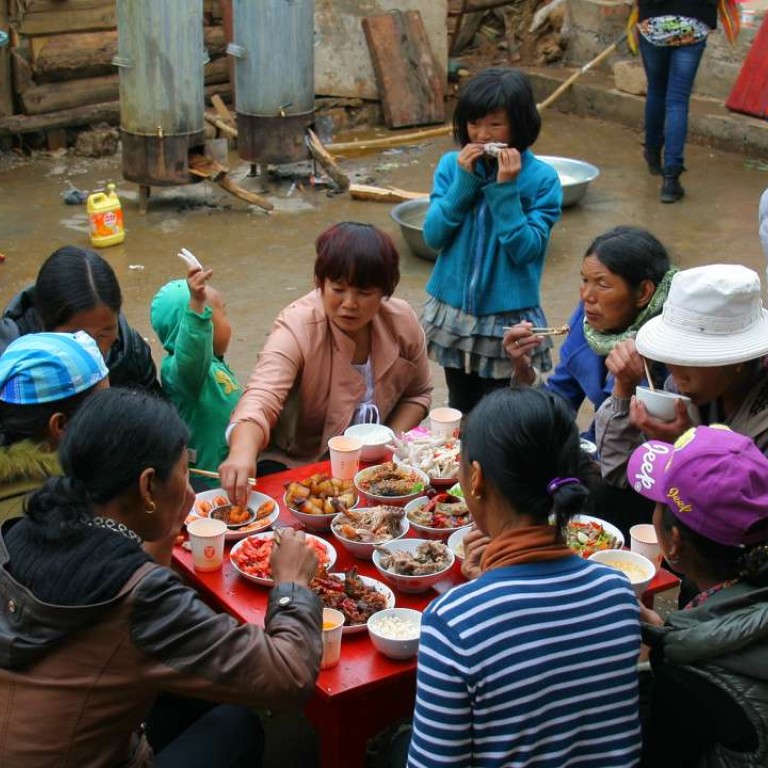
Review | The Kingdom of Women: China’s ‘lost tribe’ of matriarchs, the Mosuo
Choo Waihong has a fascinating story to tell, of a tribe in China’s mountainous southwest where women are in charge but, unfortunately, this debut author’s abilities aren’t quite up to the challenge
The Kingdom of Women
by Choo Waihong
I.B. Tauris
“Lost tribes”, cut off from the babbling, interconnected world, continue to ignite the imagination. Like species on isolated islands that take distinct paths of evolution, lost tribes suggest alternative modes of development. Their separation from the corrupting influences of civilisation in an imagined Edenic idyll also offers metaphors for a lost innocence.

The Mosuo tribe in western Yunnan province survives by subsistence farming, follows the practices of Tibetan Buddhism and has a largely communal economy. Until recently, few of its members could read or write (a handicap now being rectified with the opening of more schools nearby).
Choo first encounters the Mosuo during a holiday after taking early retirement from her job as a corporate lawyer in Singapore. Finding herself spending more and more time with the tribe, she has a house built for her and gradually integrates into Mosuo society.
She becomes godmother to a young girl, helps sustain a local festival and funds the education of promising youngsters. She then spends several chapters describing Mosuo society, its rites and rituals, its forms and behaviours, making clear that, as a feminist, she considers their matriarchal culture to be superior to the strict patriarchal society in which she was raised.

Choo, however, is no Claude Lévi-Strauss or Marcel Mauss – she does not consider how a subsistence economy might have influenced Mosuo culture and seems unaware of the fact that many of its communal practices will be familiar to any group that has experienced poverty. Still, the reader gets insights into the tribe’s society and culture, Choo’s passion for the Mosuo, her dedication to improving the lives of those around her and her feelings for women suppressed by the strictures of patriarchal societies.
Mosuo children are born only to their mothers; fathers have no parental claim, though they can choose their degree of involvement with their offspring. There is no institution of marriage. Women can choose to have an axia (a common-law partner) for as long as they wish but there is no culture of life-long monogamy. This, unfortunately, has given the Mosuo a reputation for practising “free love”, that euphemism for sexual indiscrimination, which some tourists try to take advantage of.
In fact, Mosuo women approach relationships with the level-headedness necessary in a society that ekes out a living through gruelling manual labour. Choo rightly contrasts this approach with the treatment of “leftover women” elsewhere in China and, again, finds it superior.
The men have no say in finances or “family” land either, but there are compensations, and Choo insists that Mosuo society is better for men, too. They are free to flirt and flatter, to show off and to seek trysts (sese). They are admired for their physical attributes: their broad shoulders, strong hands and prowess in manual labour, which, of course, it is their duty to provide. Serenading and showing off are part of male culture from adolescence. Male peacocking is central to courtship rituals throughout the animal kingdom and, in common with other tribal societies, Mosuo wooing is more performative than in cultures where material possessions take precedence. Serenades, eye-gazing, dancing and swaggering may all lead to a sese.

While it’s easy to imagine the alacrity with which a commissioning editor agreed to her pitch – this is a fascinating subject, after all – Choo’s narrative abilities are modest. Recounting a series of experiences with the Mosuo isn’t enough for the reader. Her tale lacks the narrative development of a well-told story. Choo is a first-time author, and perhaps this accounts for the book’s shortcomings.
The early chapters, in which she writes of her experiences with the Mosuo, are the least rewarding. Instead of scene setting and drawing personalities, they are more concerned with describing Choo’s minor undertakings while settling in. In chapter one, for instance, Choo describes how she first came to Lugu Lake, where the Mosuo live. She depicts the Gemu Mountain Goddess Festival and encountering “a friendly face” who guides her through the ceremony. The face belongs to a girl named Ladzu. It’s not until chapter four that we learn Ladzu is 14, nor is there any characterisation. Choo mentions Ladzu’s mother, Gumi, several times, but not her age, appearance or personality. Names pop up and the reader struggles to recall who they are, the setting feels vague and the narrative jumps around.
Later thematic chapters on the forms and functions of Mosuo society are rather better. And the structure of the book is the right one – we need to hear Choo’s story among the Mosuo to grasp the conclusions and insights she yields.
The Kingdom of Women has a strong premise, and it just about gets by on the strength of that. But, ultimately, it is more the story of Choo than of the Mosuo. At one point, she writes, “In many ways I really believe I am accepted because I am a woman welcomed in a woman’s world. In this female-dominated bubble, no one thinks it strange that I am a lone female who goes about happily on my own. The Mosuo, both women and men, are accustomed to the presence of a strong woman mainly because every home has one.”
Too often, Choo uses the Mosuo as a mirror in which to flatter herself. The Kingdom of Women is a story of a fascinating people that struggles to be told.

